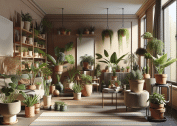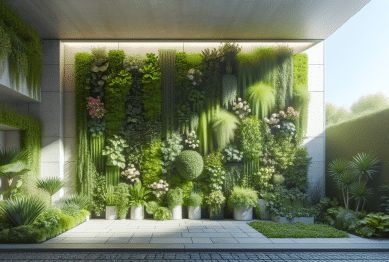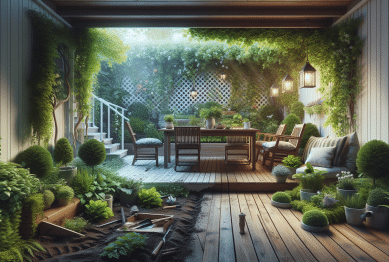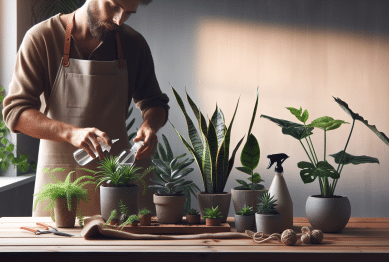Life in 2025 moves fast. Between hybrid work schedules, family demands, and the endless stream of digital notifications, our homes have become more than just living spaces—they’re now offices, gyms, classrooms, and sanctuaries rolled into one. With so many roles to fill, clutter and disorganization can creep in quickly, creating stress and draining our mental energy.
The connection between our environment and our well-being is stronger than ever. Studies from Princeton University show that physical clutter competes for our attention, making it harder to focus and increasing stress levels. Meanwhile, the National Sleep Foundation reports that people who sleep in neat, clutter-free bedrooms enjoy higher-quality rest. Clearly, interior organization isn’t just about aesthetics—it’s an essential part of wellness.
That’s why interior organization tips for stress-free living have become one of the most talked-about lifestyle and wellness trends in 2025. This guide takes a closer look at the latest approaches, practical strategies, and wellness-driven design concepts that can help you transform your home into a supportive, stress-free environment.
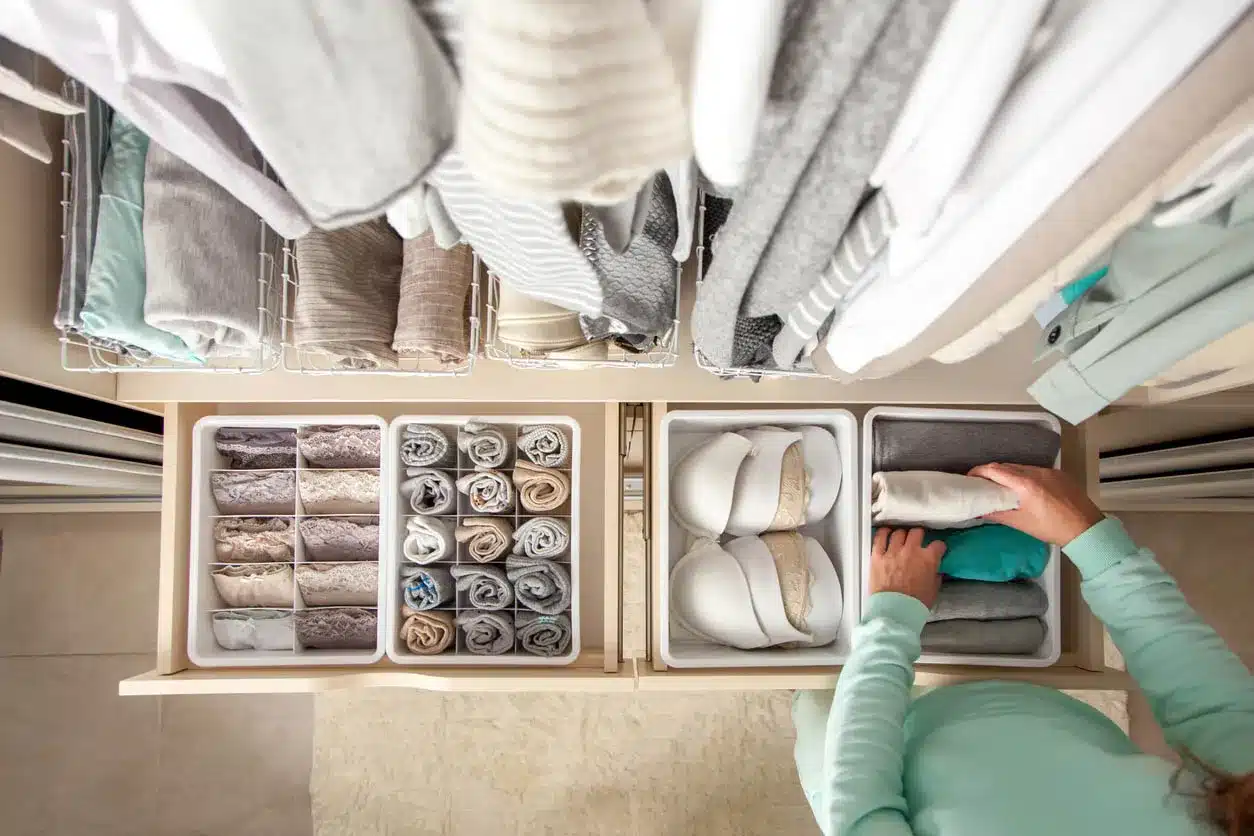
Why Interior Organization Is Linked to Wellness
Before diving into trends and tactics, it’s worth understanding why organization matters so much for health and wellness.
- Mental clarity: Clutter has been shown to increase cortisol levels—the body’s primary stress hormone. An organized space frees the brain from distractions and helps with focus.
- Better sleep: A clutter-free bedroom is associated with improved sleep quality. Stress hormones stay lower, and the brain interprets a tidy environment as safe and calming.
- Physical health: Organized homes are easier to clean and maintain, lowering exposure to allergens and dust. Fewer misplaced items also mean less frustration and wasted time.
- Emotional stability: Living in order fosters a sense of control. That feeling of control translates into confidence, reduced anxiety, and resilience in daily life.
In short, the benefits of organization ripple outward—from reducing day-to-day stress to strengthening overall wellness.
Top Trends in Interior Organization for Stress-Free Living
1. Mindful Decluttering Takes Center Stage
Minimalism has been around for a while, but in 2025 it has matured into mindful decluttering. Instead of focusing on owning the least amount of stuff, the emphasis is now on intentionality.
Mindful decluttering encourages you to ask: Does this item support my life today? Does it align with my values? If the answer is no, it’s time to let go. Digital tools such as ClutterFree and SortJoy are helping people take inventory, track belongings, and make conscious decisions.
This approach avoids the rigid “all-or-nothing” extremes of minimalism and allows flexibility—keeping sentimental items or things that genuinely add joy while letting go of the rest.
2. Smart Storage for Smarter Living
Technology has moved beyond voice assistants and lighting systems—it now plays a role in keeping homes organized. Smart storage solutions are gaining traction:
- AI-powered pantry trackers send alerts when supplies are running low.
- Modular furniture with built-in sensors can suggest reorganization when space gets cramped.
- Voice-activated shelving systems open with simple commands, offering convenience in compact spaces.
These solutions do more than save space—they cut down on mental load. No more second-guessing what’s in the pantry or hunting through overstuffed drawers.
3. Biophilic Organization
Biophilic design, which integrates natural elements into homes, continues to grow in popularity. Now, it’s influencing organization too.
Open shelving with potted plants, wooden drawer dividers, and natural-light-friendly layouts combine storage with visual and emotional wellness. The presence of greenery and natural materials has been shown to lower stress, boost creativity, and improve concentration.
By merging organization with biophilia, you don’t just declutter—you create spaces that feel alive and soothing.
4. Wellness-First Layouts
How and where items are stored can have a direct impact on stress levels. The latest trend is wellness-centric layouts:
- Work-related materials are kept in closed cabinets to create a boundary between work and rest.
- Entryways are designed to be clutter-free, making coming home feel calming rather than overwhelming.
- Storage is placed strategically near high-traffic areas to keep messes from spreading.
It’s not just about storage anymore—it’s about aligning your space with your daily rhythms and mental health.
Practical Interior Organization Tips for Stress-Free Living
Trends set the stage, but practical tips are where transformation really begins. Here are actionable strategies anyone can start today.
Start Small, Win Big
Trying to organize an entire home at once is overwhelming. Begin with “stress hotspots”:
- Entryway: The first impression of your home should be calm, not chaotic. Add a small tray for keys and mail.
- Kitchen counters: A clear surface makes meal prep smoother and lowers anxiety.
- Nightstand: A clutter-free bedside area promotes better sleep and relaxation.
Small victories build momentum.
The “One In, One Out” Rule
To stop clutter at its source, adopt the one in, one out mindset. For every new purchase—whether clothes, books, or gadgets—remove one similar item. Over time, this simple practice prevents the slow buildup of unnecessary belongings.
Create Wellness Zones
Organize your home based on intentional “zones”:
- Calm Zone: A minimal corner with cushions, a candle, or your favorite book.
- Focus Zone: A workspace with cable management, clear surfaces, and only essential tools.
- Health Zone: A tidy space for yoga mats, dumbbells, or fitness gear, so wellness is accessible without hassle.
When everything has its place, stress has fewer opportunities to creep in.
Tame Paper and Digital Clutter
Paper clutter is one of the most stressful types because it carries a sense of unfinished business. Go digital whenever possible:
- Scan documents and save them to cloud storage.
- Set up automatic bill payments and email reminders.
- Shred outdated files to clear physical space.
Don’t forget your digital environment: organizing files, apps, and emails reduces digital fatigue too.
Embrace Multi-Functional Furniture
Especially in urban living where space is limited, multi-functional furniture is a stress saver. Storage ottomans, beds with built-in drawers, and wall-mounted foldable desks are all trending in 2025. These allow you to keep essentials accessible without letting clutter dominate your living space.
Rotate Seasonal Items
Keeping off-season items out of sight is a simple but powerful stress-reducer. Store clothing, holiday decor, or sporting equipment in clearly labeled bins. By rotating belongings seasonally, your living areas feel lighter and more relevant to the moment.
Quick Wins: Daily Organizational Habits
- Five-Minute Reset: Spend five minutes at the end of each day putting things back in place.
- The Basket Trick: Keep a decorative basket in high-traffic areas; toss items in during the day, then put them away at night.
- Weekly Declutter Check: Pick one drawer, shelf, or corner each week and reassess what stays.
Consistency makes organization sustainable.
How Organization Directly Reduces Stress
When you put these tips into practice, the benefits show up quickly.
- Less decision fatigue: Knowing exactly where things are simplifies routines and reduces micro-decisions.
- More time saved: According to the American Cleaning Institute, people spend an average of 2.5 days each year searching for misplaced items. Organized spaces give this time back.
- Improved family harmony: Clutter often causes arguments at home. Shared organization systems reduce conflict and increase cooperation.
Balancing Technology and Simplicity
Technology can be a game-changer, but balance is key. Smart systems are great for tracking groceries or automating reminders, but too much reliance on gadgets can create new forms of digital clutter.
The sweet spot lies in hybrid organization—mixing timeless practices like labeled bins and mindful decluttering with smart storage innovations. This way, you stay organized without becoming overly dependent on technology.
Final Thoughts: Organization as Daily Wellness
In 2025, interior design is no longer just about visual appeal. Homes are expected to support well-being, reduce stress, and enhance focus. That’s why interior organization tips for stress-free living are more relevant than ever.
By integrating mindful decluttering, embracing smart storage, and designing spaces that align with wellness principles, you can turn your home into a tool for peace of mind.
The message is simple: your space should work for you, not against you. Every drawer organized, every clutter-free corner, and every intentional layout choice builds into something bigger—a lifestyle where stress is reduced, clarity is restored, and wellness is prioritized.
Small, consistent actions create lasting calm. And in a world that never stops moving, that sense of peace may be the most valuable thing of all.
References
- American Cleaning Institute. (2023). Survey on household cleaning and organization habits. Available at: https://www.cleaninginstitute.org (Accessed: 22 August 2025).
- National Sleep Foundation. (2023). Bedroom environment and sleep quality. Available at: https://www.thensf.org (Accessed: 22 August 2025).
- Princeton University Neuroscience Institute. (2011). Interactions of top-down and bottom-up mechanisms in human visual cortex. Available at: https://www.princeton.edu (Accessed: 22 August 2025).





